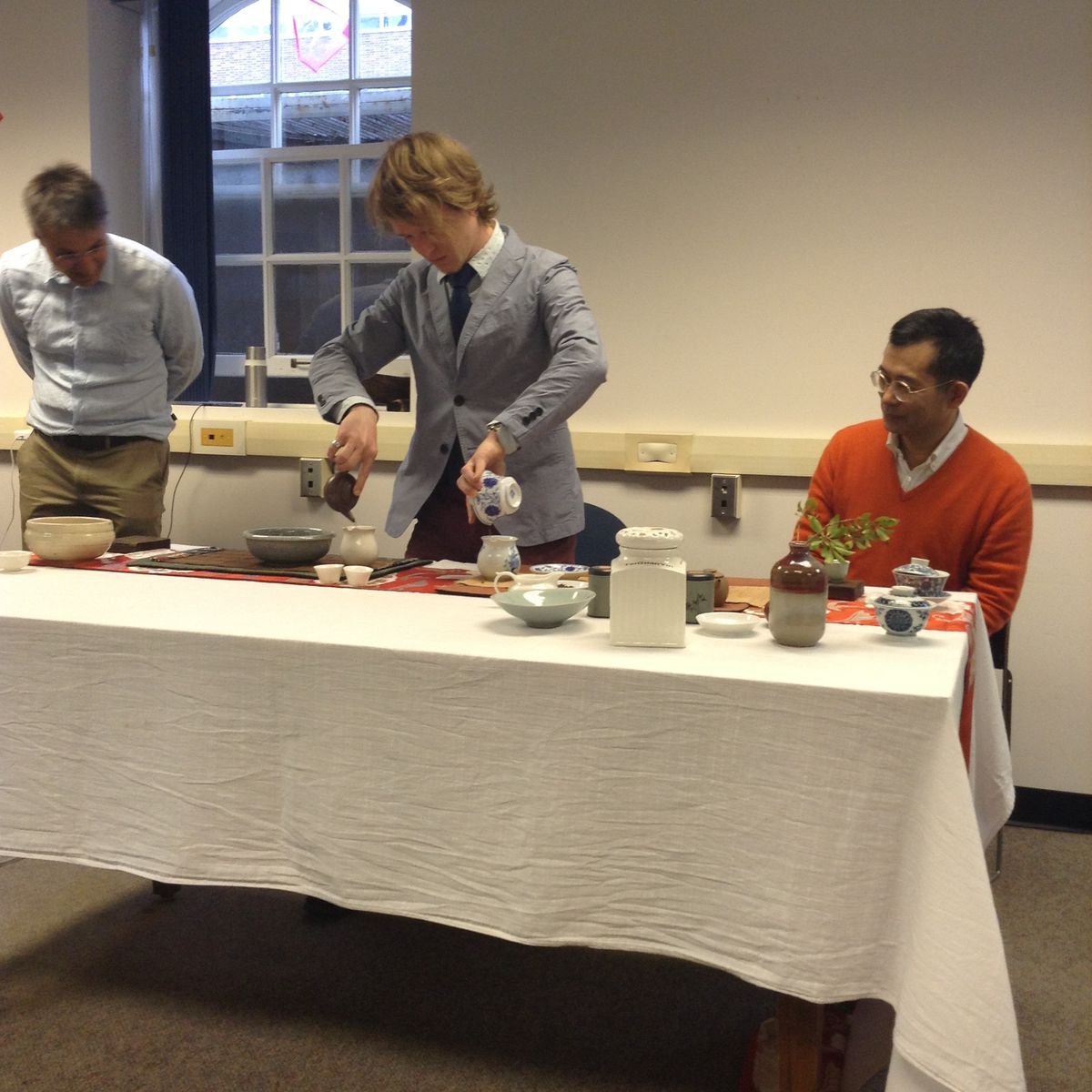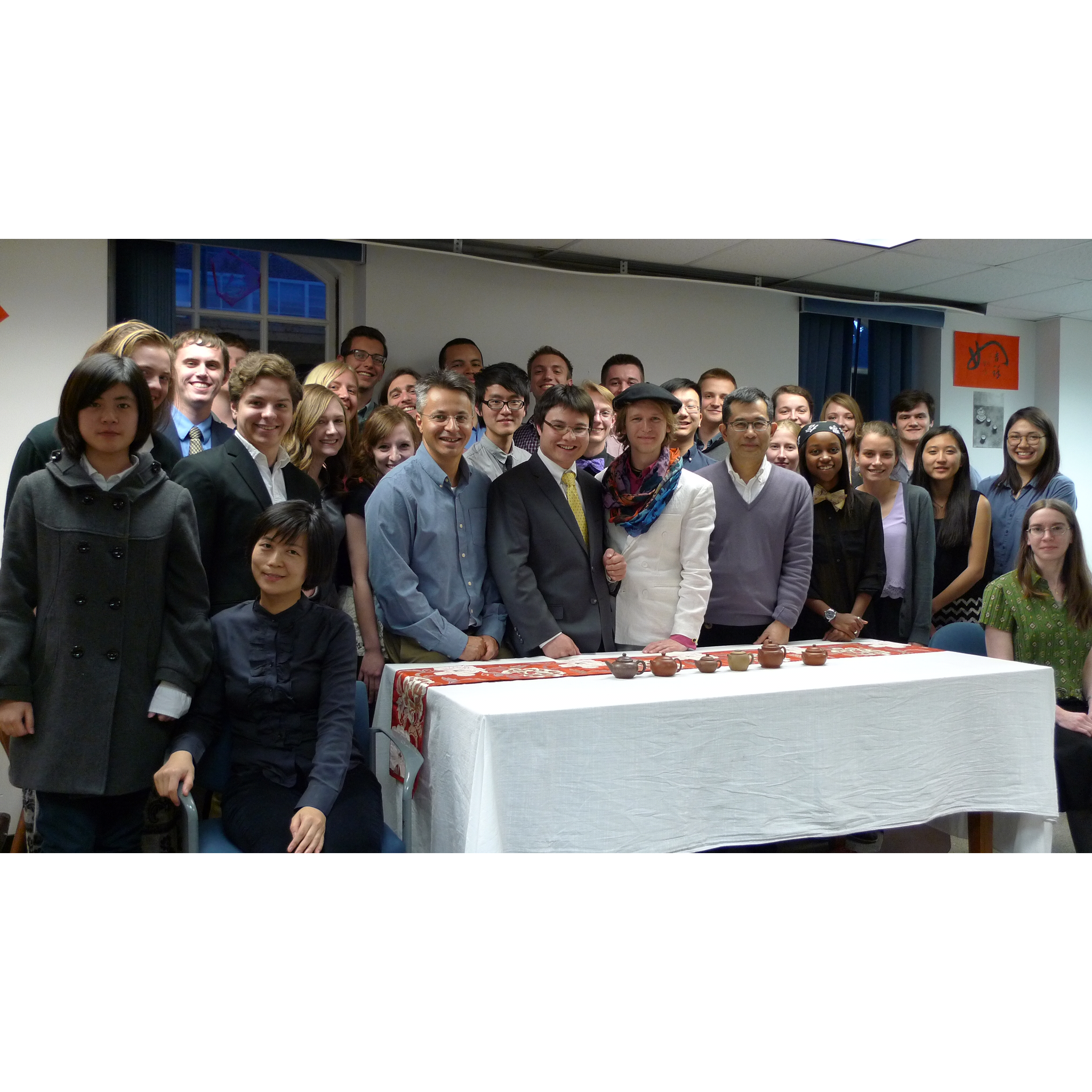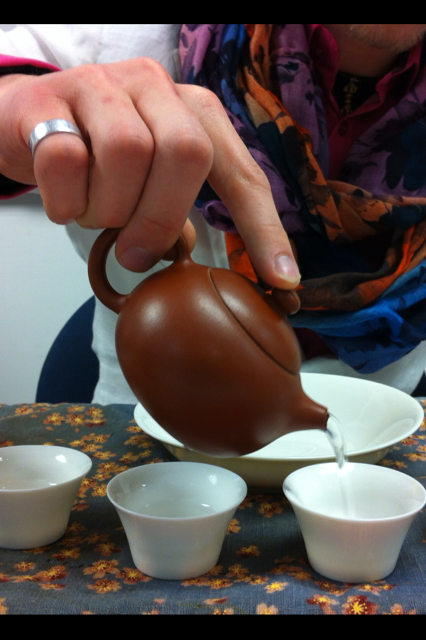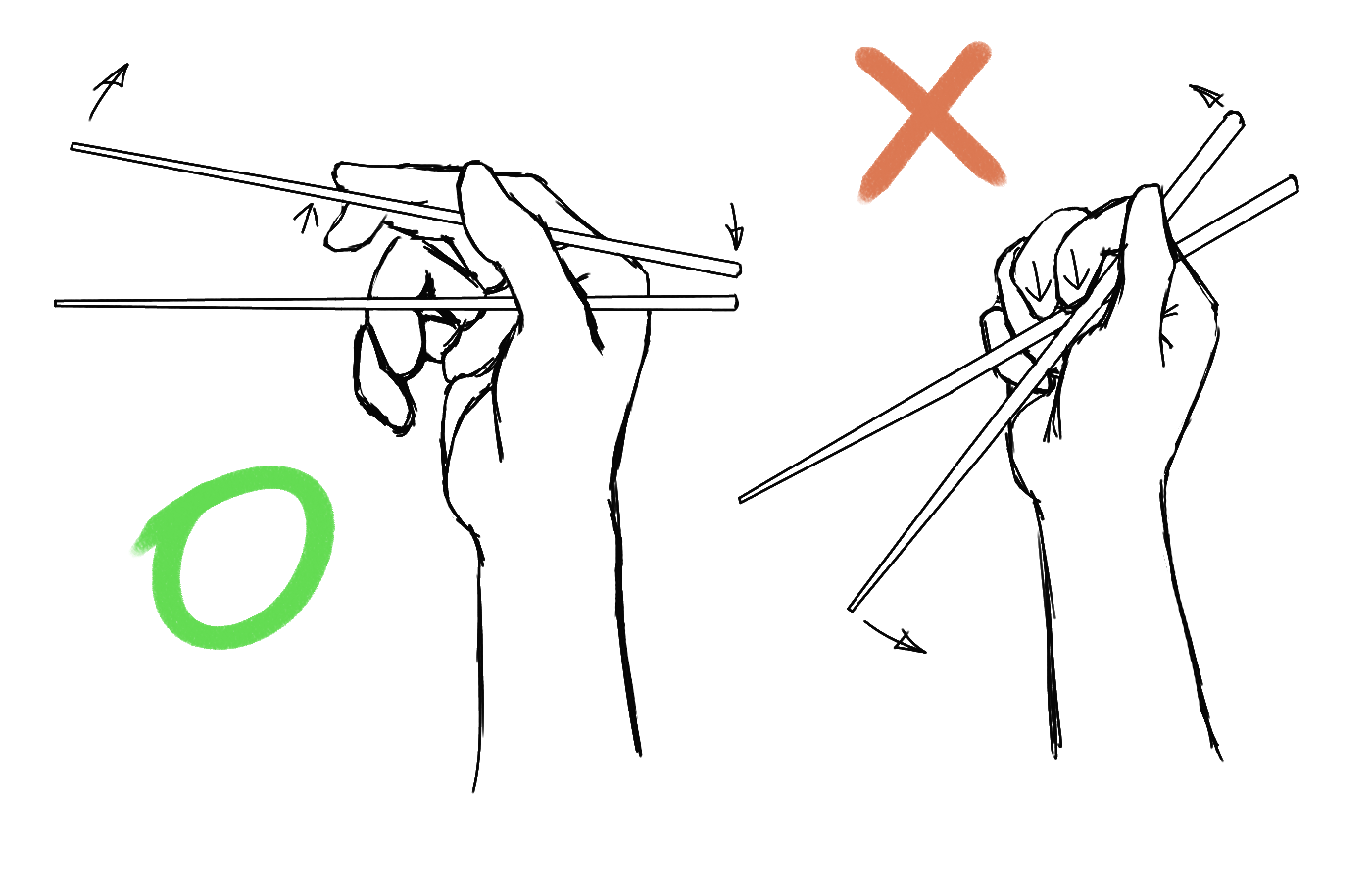I’m Back

Namaste friends, romans, 茶人, & countrymen! It has been far too long, with far too little tea and tea related adventures since I last posted.
But the wait is over.
After this most successful event, the 2015 Yixing Teapot Exhibition, hosted by the Tea Institute at Penn State, I feel alive to the allure of tea once again.
Ryan Ahn (狮子) has done an unbelievable job of taking over the institute I founded and I am so happy to remain involved in an advisory role. Ryan and his executive team are 100x better at recruiting than I (and my executive team, sorry guys) ever was/were.

Under Ryan and the new executive board, the Institute has grown to 44 active members! (all of whom are directly descendent from my tea linage, making me far more proud than the parents of an honor roll student)
Part of the master level training we received as part of this exhibition was the right way to hold a yixing teapot.

You would be amazed at how hard it is for new and experienced members alike to hold a small hot teapot full of near boiling water and pour without spilling or burning yourself; it’s even harder when you’re attempting to pour elegantly & confidently using a rare and fragile Qing Dynasty thin-walled yixing in front of a 40 person crowd focused intensely on your skill and technique – I’ve never seen so many college students develop spontaneous hand tremors.
The proper way to hold a yixing is very similar to the hand position for chopsticks:

The thumb, middle finger, and ring finger grip the top third of the handle, as far from the body of the teapot as possible, while the pointer finger holds the lid of the teapot during the pour. As in the photo of my hand above (recognize my ring? How about my white suit and colorful neckerchief?), pouring from the teapot directly into a set of cups is a more advanced technique – and requires the ability to control the flow rate, halt the pour between cups*, and accurately estimate the distribution of tea from the ~3 stratified layers that form within the teapot during the seep.
*Halting the pour without yielding an unbalanced cup of tea requires its own more advanced technique; you cannot simply brew to a balance point and take your time pouring. Thus, we suggest less experienced brewers, to use a Gongdao bei while initially learning to brew in a yixing.
Once you get really good, you’ll be able to brew in a yixing (right hand) and gaiwan (left hand) at the same time – my 7 years of practice paid off for that photo!